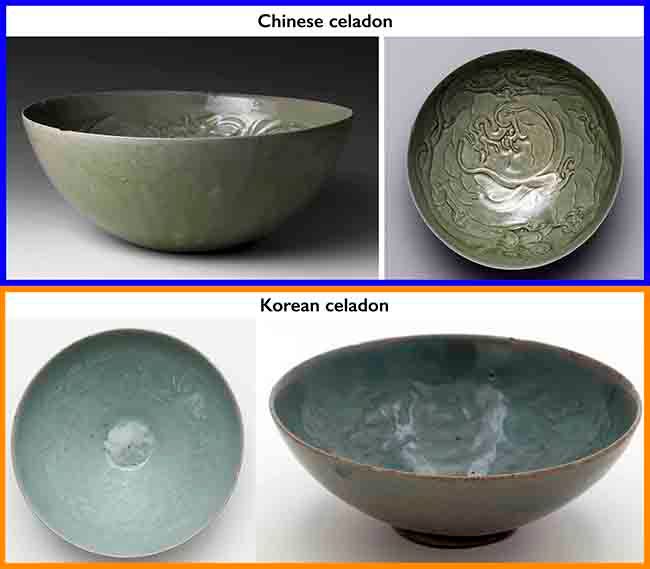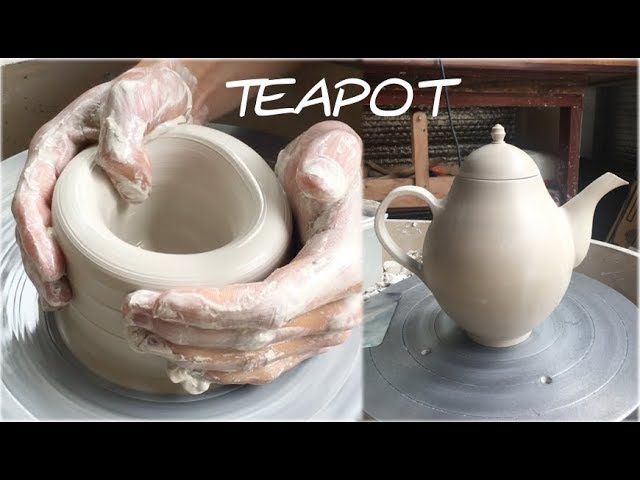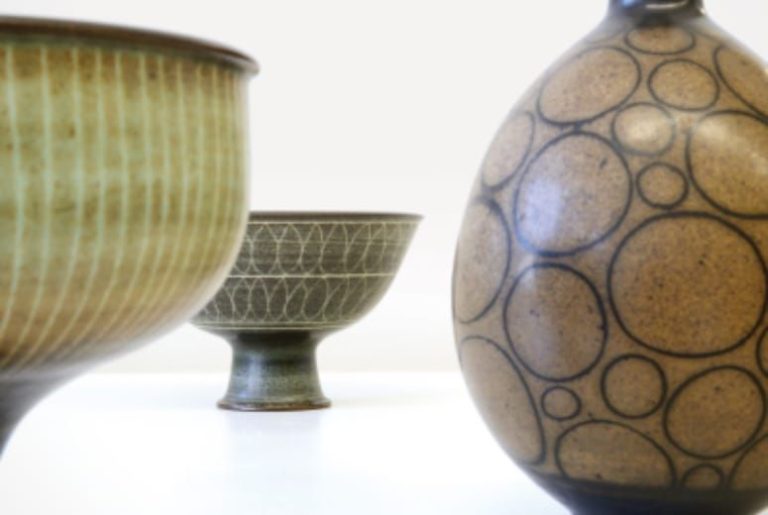What Type Of Clay Can Harden?
Clay is a fine-grained natural material that combines minerals, water, and sometimes organic matter. It is plastic when wet and becomes permanently hard and dense when fired at high temperatures. Clay has unique properties that make it ideal for a variety of uses.
The key properties of clay include:
- Plasticity – Clay is moldable when wet but retains its shape when dried
- Cohesiveness – Clay particles stick together firmly
- Absorption – Clay can absorb and hold significant amounts of water
- Hardening – Clay hardens permanently upon firing/heating at high temperatures
- Adhesiveness – Clay readily adheres to other materials
Due to these special properties, clay is one of the most useful natural materials. It has been used since ancient times to make pottery, bricks, tiles, sculptures, and other objects. When mixed with water, clay can be shaped into virtually any form. Once it dries or is fired, it will maintain that shape permanently. The unique hardening process is what enables clay’s extensive use for structural materials, cookware, art, and more.
Types of Clay
There are several major categories of clay, each with their own properties and characteristics:
Earthenware Clay
Earthenware is a common type of clay that is fired at lower temperatures, typically between 1500-2200°F. It is porous and absorptive. Earthenware can be glazed to provide a non-porous surface for holding liquids. Terracotta is a common type of earthenware clay.
Stoneware Clay
Stoneware clay is fired at higher temperatures, usually between 2200-2400°F. It is less porous than earthenware, but still absorbs some water. Stoneware clay is commonly used to create pottery, cookware, and artware.
Porcelain Clay
Porcelain is a very fine white clay that becomes vitrified and non-porous when fired at extremely high temperatures above 2392°F. It is highly impermeable and can be thinly potted. Porcelain is valued for its strength, translucency, and resonance.
Ball Clay
Ball clay is a kaolinite clay that forms a moldable plasticity when mixed with water. It is typically mixed with other clays to improve workability and strength. Ball clay helps prevent cracking and warping during the drying and firing process.
Fire Clay
Fire clay is very refractory and withstands high temperatures without deforming. It is used to line kilns and fireplaces. Fire clay can also be mixed with other clays to increase heat resistance.
Composition of Clay
Clay is composed of microscopic natural minerals. The main components that make up clay are silicates like silicon, oxygen, and aluminum. Other elements commonly found in clay include iron, magnesium, sodium, potassium, calcium, and less commonly titanium.
There are several key ingredients that give clay its unique properties and ability to harden:
- Silica – Gives clay its strength and high melting point. Silica makes up over 40% of clay’s composition.
- Alumina – A soapy, sticky component that gives clay its plasticity when wet.
- Water – Hydrates the clay minerals and allows it to be molded.
- Fluxes – Minerals like iron, magnesium, and calcium that help lower clay’s melting point during firing.
The varying amounts of these natural elements contribute to the different types and properties of clays. Understanding clay’s chemical composition gives insight into how and why some clays can harden when dried or fired.
How Clay Hardens
Clay hardens through a process called sintering, which involves both physical and chemical changes in the clay particles. As clay dries, the water evaporates and the clay shrinks, causing the clay particles to pack more tightly together. The physical proximity of the packed clay particles allows for bonds to form between them during firing.
When clay is fired in a kiln, the heat causes chemical reactions to occur between the clay particles. Silica, alumina, and water molecules within the clay start to vibrate intensely as the temperature rises. The hydroxyl ions (OH-) in the clay begin leaving the structure, allowing more silica and alumina ions to form bonds with each other. This process is called dehydroxylation.
The combination of the tightened physical structure from drying and the formation of ceramic bonds during firing causes clay to harden permanently into a dense, rock-like state. The higher the firing temperature, the more dense and hard the clay becomes. The firing process transforms soft, moldable clay into a hardened, durable ceramic material.
Clays That Harden
Some clays are known for their ability to harden and become very strong through the firing process. The most common clays that can harden effectively include:
- Stoneware Clay – This clay contains small amounts of fluxes like feldspar that promote vitrification at high temperatures resulting in a hard, non-porous material.
- Porcelain – Made from kaolin clay, porcelain is highly refractory and can be fired at very high temperatures to produce a hard, dense, and white material.
- Fire Clay – Fire clays have high silica and alumina content which gives them an excellent resistance to heat and the ability to harden at high kiln temperatures.
- Ball Clay – Ball clays typically contain kaolinite and other minerals that allow it to harden when fired into ceramic bodies or glazes.
- Earthenware Clays – Although lower in silica, many earthenware clays can be fired at high enough temperatures to produce hardened materials.
These clays all contain the right mineralogical properties and composition to promote hardening and densification during the firing process. Their ability to vitrify makes them ideal choices for ceramics that require strength and low porosity.
Clays That Don’t Harden
Not all types of clay can harden equally well. Clays like earthenware clay have a more porous body and cannot harden to the same degree as stoneware or porcelain clays. This is due to the composition and firing temperature of earthenware clays.
Earthenware clays contain more impurities and fluxes than stoneware or porcelain clays. Impurities like iron oxide can cause earthenware to discolor at high temperatures. Fluxes lower the melting temperature of clays, causing earthenware to vitrify and become glassy at lower temperatures compared to stoneware and porcelain.
As a result, earthenware clays are typically fired at lower temperatures, usually below 2,200°F (1,200°C). At these temperatures, they do not become fully vitrified. This leaves the clay body somewhat porous and limits the strength and hardness it can achieve through firing. Earthenware’s open body makes it more prone to water absorption and reduces its durability.
For these reasons, earthenware clays like terracotta cannot fully vitrify and harden to the same degree as some other clays. They are best suited for items not needing high strength or water resistance. However, earthenware can still become quite durable in its own right within the limits of its composition and firing behavior.
Factors in Hardening
There are several key factors that determine whether a clay will harden or not. The three most important factors are temperature, mineral content, and firing time.
Temperature is crucial for hardening clay. When clay is heated to high temperatures, usually between 1000-1200°C, the minerals within the clay undergo chemical changes. The high heat causes the clay particles to sinter together, which fuses them into a hardened material.
The mineral content of the clay is another major factor. Clays with higher amounts of flux materials like feldspar and mica are more likely to vitrify and harden at high temperatures. Clays without flux materials may not harden, even when fired at high heat.
Firing time is also important. The longer the clay is exposed to peak firing temperatures, the more thoroughly it will harden. Short firing times may not allow the clay body to fully vitrify. An adequate firing time ensures the chemical changes can fully take place.
Understanding these three factors allows potters and ceramicists to choose the right clays for their projects and properly fire them to achieve hardened results. The interaction between temperature, mineral content, and firing time is essential for transforming soft clays into hardened, ceramic materials.
Uses of Hardened Clay
Clay that has been hardened has many practical uses thanks to its durable and malleable nature. Some of the most common uses of hardened clay include:
Pottery
Pottery is perhaps the most well known use of hardened clay. Clay can be shaped into pottery while soft, then fired at high temperatures to harden and set the shape permanently. Pottery uses include tableware, vases, storage vessels, and more. The oldest known pottery dates back over 20,000 years.
Tiles
Clay can be pressed into molds to form ceramic tiles of various shapes, then fired to harden. Tiles are commonly used for flooring, countertops, backsplashes, roofs, and wall decorations. Tile murals and mosaics can form stunning works of art.
Bricks
Clay bricks are one of the oldest and most reliable building materials. The wet clay can be molded into brick shapes, then fired in a kiln to permanently harden the brick. Clay bricks have been used in construction for thousands of years thanks to their durability.
History of Hardened Clay
Hardened clay has been used to create useful and decorative objects for thousands of years. Some of the earliest examples of clay hardening date back to around 6000 BC when ancient cultures discovered that clay could be hardened in a fire. This opened up new possibilities for crafting durable ceramic vessels, pottery, and artworks.
In ancient Mesopotamia, Egypt, China, and many other regions, pottery made from hardened clay was an important advancement. Clay pots and containers were much less prone to breaking compared to previous vessels made from materials like wood, gourds, or stone. The development of glazing techniques around 2000 BC helped make clay pottery waterproof.
From ancient times up until today, clay-based ceramic and porcelain tiles have also been an important building material for architecture. civilizations like the Romans created durable ceramic floor and wall tiles from hardened clay.
The production of porcelain from hardened clay was developed in China over a thousand years ago during the Tang dynasty. Porcelain’s fine white clay body was ideal for creating delicate artworks and dishware. From Asia, the techniques for making hardened porcelain spread to Europe and many other parts of the world.
Even in modern times, clay that has been hardened through firing remains an essential material for pottery, sculpture, construction, and more. Over thousands of years, ancient potters discovered the right types of clay and perfected techniques to create objects from hardened clay that have stood the test of time.
Conclusion
In conclusion, there are several key points to understand about what types of clay can harden:
– Clays containing kaolinite, illite, and montmorillonite are the most commonly used clays that can harden. These clays contain minerals that give them plasticity when mixed with water, allowing them to be shaped, and then harden through drying and firing.
– Clays without these mineral components, like pure silica clays, do not have the same plasticity and hardening abilities. They crumble when dried rather than forming a hardened shape.
– The composition of the clay, the presence of fluxes, the amount of water, and the firing temperature/technique all impact the hardening process. With the right clay composition and firing approach, hard ceramics can be achieved.
– Hardened clay has been used since ancient times to create pottery, tiles, bricks, sculpture and more. The ability of certain clays to be shaped and then permanently hardened through firing has led to their use in countless applications over human history.
– Understanding which clays have the right composition to be workable when wet and hard when fired allows potters, artists, builders and manufacturers to select the best materials for their projects requiring hard, durable clay products.




